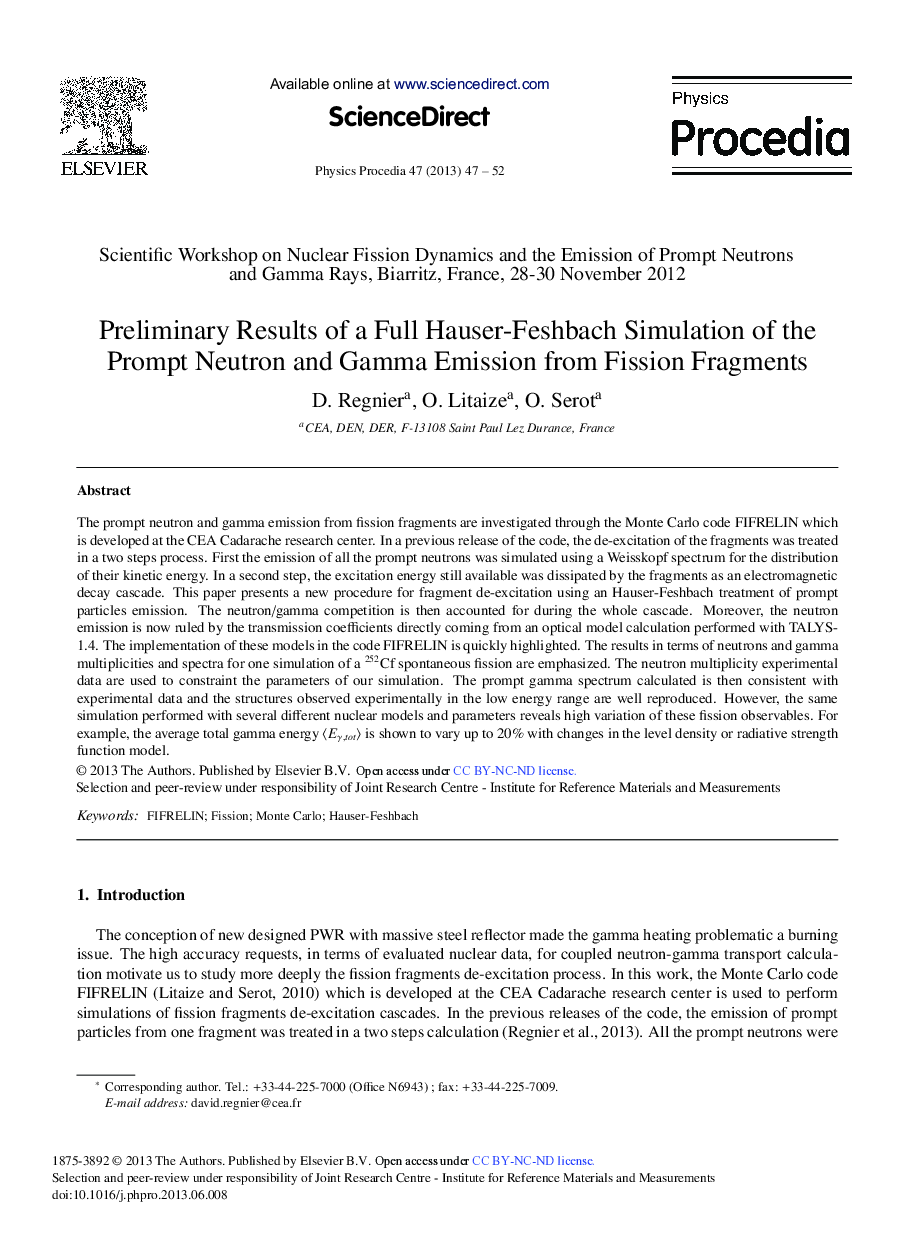| کد مقاله | کد نشریه | سال انتشار | مقاله انگلیسی | نسخه تمام متن |
|---|---|---|---|---|
| 1869180 | 1530977 | 2013 | 6 صفحه PDF | دانلود رایگان |

The prompt neutron and gamma emission from fission fragments are investigated through the Monte Carlo code FIFRELIN which is developed at the CEA Cadarache research center. In a previous release of the code, the de-excitation of the fragments was treated in a two steps process. First the emission of all the prompt neutrons was simulated using a Weisskopf spectrum for the distribution of their kinetic energy. In a second step, the excitation energy still available was dissipated by the fragments as an electromagnetic decay cascade. This paper presents a new procedure for fragment de-excitation using an Hauser-Feshbach treatment of prompt particles emission. The neutron/gamma competition is then accounted for during the whole cascade. Moreover, the neutron emission is now ruled by the transmission coefficients directly coming from an optical model calculation performed with TALYS-1.4. The implementation of these models in the code FIFRELIN is quickly highlighted. The results in terms of neutrons and gamma multiplicities and spectra for one simulation of a 252Cf spontaneous fission are emphasized. The neutron multiplicity experimental data are used to constraint the parameters of our simulation. The prompt gamma spectrum calculated is then consistent with experimental data and the structures observed experimentally in the low energy range are well reproduced. However, the same simulation performed with several different nuclear models and parameters reveals high variation of these fission observables. For example, the average total gamma energy (Eγ,tot) is shown to vary up to 20% with changes in the level density or radiative strength function model.
Journal: Physics Procedia - Volume 47, 2013, Pages 47-52